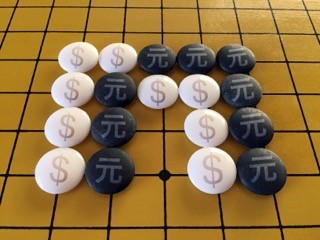China has a 4-way global gold supply domination strategy. And it’s starting to corner the market.
 Bullion.Directory precious metals analysis 15 January, 2014
Bullion.Directory precious metals analysis 15 January, 2014
By David Smith
Senior Analyst at The Morgan Report
Second, it keeps virtually all domestically mined gold “in house.”
Third, China partners with or buys high grade, in-situ gold (and silver) projects around the globe. One of the most well-known recent actions has involved negotiations to partner with Barrick Gold on its massive cost-overrun-plagued Pascua Lama project, which straddles the Chilean-Argentine border.
Most recently, China’s largest gold producer, Zinjin Mining Group, made a strategic investment in Pretium Resources’ high-grade Brucejack gold Project in northwestern British Columbia to the tune of $80 million. This latter investment will facilitate eventual construction of a 2,700 tonne-per-day underground mine.
Fourth, and virtually impossible to quantify with a reasonable level of accuracy, are China’s efforts to purchase “off the books” gold production from what are known as informa or artisanal gold miners in Africa and South America. This gold, which will never show up on an import manifest, nevertheless adds one more acquisition stream to the literal river of bullion flowing directly into the coffers of China’s golden hoard.
U.S. intelligence advisor Jim Rickards, author of The Death of Money, recounts an episode told to him by a friend who is a senior officer of a high-security transporter of physical metals who had brought gold into China at the head of an armored column, guarded by heavily-armed troops.
One of these days, at a time of its choosing, China may reveal just how much gold it does hold, alongside a possible decision to enable a newly gold-backed currency, the Yuan, to make its debut on the world’s financial stage.
Such an event would have profound implications for the primacy of the U.S. dollar, as well as America’s ability to continue running printing press deficits, long financed by Chinese purchases of U.S. debt instruments, to the tune of several trillion dollars.
China’s Undisclosed Gold Reserves: “A dagger pointed at the heart of the dollar”
When this event takes place, it will become evident to the world’s financial players that, as Rickards so poignantly remarks, China’s true gold reserves will have become “a dagger pointed at the heart of the dollar.”
Most Westerners fail to appreciate the methodology by which China has traditionally pursued – and often successfully achieved – its geopolitical ends.
 China’s strategies are oriented from the perspective of many years or even decades, unlike Western governments, who often judge success or failure based upon quarterly or annual progress reports. They are not likely to be concerned if the Pascua Lama project is not in production 10 years from now. They know that the gold – and silver is in the ground, so it’s just a question of when – not if – they can acquire a substantial amount, adding it to their continually-growing stash.
China’s strategies are oriented from the perspective of many years or even decades, unlike Western governments, who often judge success or failure based upon quarterly or annual progress reports. They are not likely to be concerned if the Pascua Lama project is not in production 10 years from now. They know that the gold – and silver is in the ground, so it’s just a question of when – not if – they can acquire a substantial amount, adding it to their continually-growing stash.
Some Westerners are familiar with a Japanese board game of strategy called “Go.” Few know that this game actually originated in China more than 2,500 years ago. Though the two player game has fairly simple rules, the number of possible games is several times that of chess. The objective is to outmaneuver the opponent, surrounding the largest area of the board with one’s own stones.
China Is “Surrounding” the Global Gold Supply
In the figure above, a situation known as “seki” or “mutual life” has taken place. The player with the black stones – labeled here as the Chinese currency, the Yuan, has positioned in such a way that if its opponent moves first – in this case, the U.S. dollar, he will be captured.
This Go board move offers an excellent analogy for the U.S. dollar competition with the Chinese Yuan. In order to be “dethroned,” the dollar does not have to be eliminated from global currency completion. It may not be necessary for China – using chess terminology – to fully checkmate the dollar. Instead, simply relegating it to “first among equals” might be enough to effectively cripple its historic full-spectrum functionality, because at that point, the Federal Reserve would no longer have the ability to issue unlimited, un-backed, U.S. dollar-denominated debt instruments.
A Game of Stones and Silk
“Surrounding” global gold production is just one aspect of China’s grand strategy for achieving political and economic dominance in Central Asia and beyond. The revitalization of modern-day trade routes, throughout direct spheres of influence, integrated with connections into Europe – once known as The Silk Road – is well underway.
Think of this term as a plural. These “roads” will see Chinese companies investing along their paths in dozens of countries, a significance that is almost impossible to overestimate. Pepe Escobar, the roving correspondent for Asia Times/Hong Kong, describes it this way:
The Yiwu-Madrid route across Eurasia represents the beginning of a set of game-changing developments. It will be an efficient logistics channel of incredible length. It will represent geopolitics with a human touch, knitting together small traders and huge markets across a vast landmass. It’s already a graphic example of Eurasian integration on the go. And most of all, it’s the first building block on China’s ‘New Silk Road,’ conceivably the project of the new century and undoubtedly the greatest trade story in the world for the next decade.
Meanwhile, the systemic issues which drove gold to $1,900 and silver to almost $50 in 2011 – deficit spending, leveraged derivatives expansion, and misallocation of money due to artificially low interest rates – continue to worsen. Divining the exact timing when all these things reach a crisis point is less important (provided you are not too late!) than making sure you have “laid in” some financial protection to help keep you safe from the inevitable fallout’s worst effects.
The progression of China’s Go game strategy – and rising affluence among Asian nations which enables them to buy increasing amounts of gold and silver – are all positive factors supporting higher precious metals prices.
When push finally comes to shove, David Galland of Casey Research seems to have nailed it when he said, “The dollar is headed toward the sacrificial altar, with a knife made of gold. Sooner or later, the central bankers will have to throw in the towel, and just let gold run.”
When that happens, the only question – other than trying to find some metal to buy – will be “How high is high?” Having enough gold and silver within arms’ reach before then may be one of the best decisions you can make.
This article was originally published here












 Material provided on the Bullion.Directory website is strictly for informational purposes only. The content is developed from sources believed to be providing accurate information. No information on this website is intended as investment, tax or legal advice and must not be relied upon as such. Please consult legal or tax professionals for specific information regarding your individual situation. Precious metals carry risk and investors requiring advice should always consult a properly qualified advisor. Bullion.Directory, it's staff or affiliates do not accept any liability for loss, damages, or loss of profit resulting from readers investment decisions.
Material provided on the Bullion.Directory website is strictly for informational purposes only. The content is developed from sources believed to be providing accurate information. No information on this website is intended as investment, tax or legal advice and must not be relied upon as such. Please consult legal or tax professionals for specific information regarding your individual situation. Precious metals carry risk and investors requiring advice should always consult a properly qualified advisor. Bullion.Directory, it's staff or affiliates do not accept any liability for loss, damages, or loss of profit resulting from readers investment decisions.

Leave a Reply